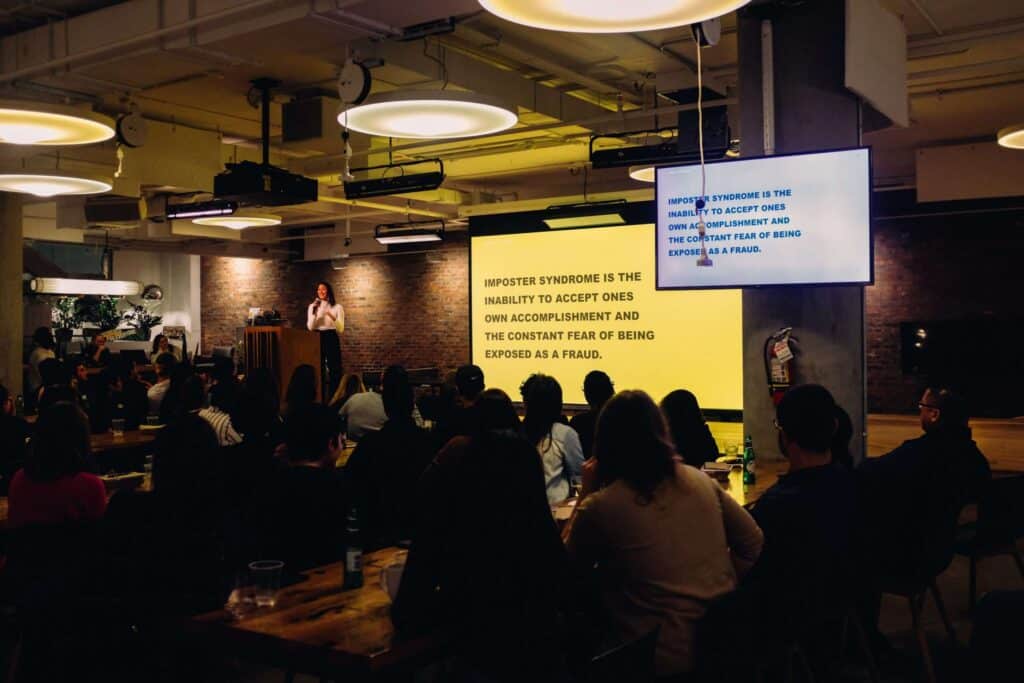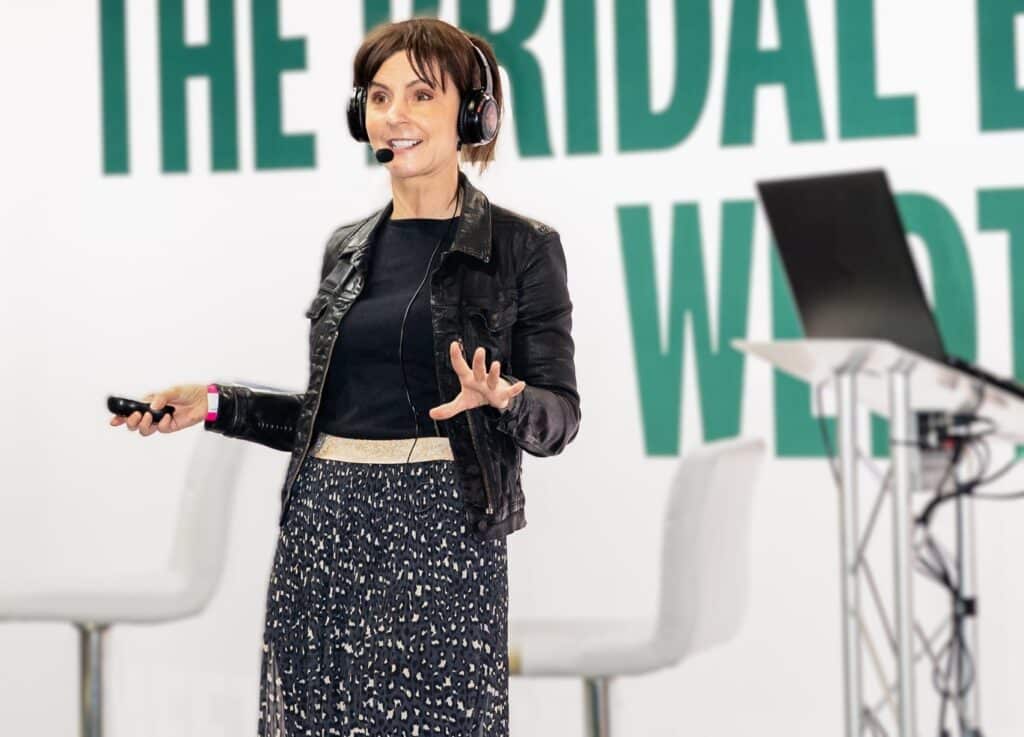Home » TED Talk Examples
(*Of course, if you’re looking for more than ‘advice’, check out all the different ways the Speechy team can help you write & deliver a great speech. Or check out our new AI-powered team member, SpeechyAI.)
‘(Of course, if you’re looking for more than ‘advice’, check out Speechy’s bespoke speechwriting service. We also have a range of excellent speech templates that might be just what you need.)
(*Of course, if you’re looking for more than ‘advice’, check out our eulogy writing service or our eulogy template.)
(Of course, if you’re looking for more than ‘advice’, check out Speechy’s bespoke speechwriting service. We also have a range of excellent speech templates that might be just what you need.)
TED Talks have become the gold standard for public speaking – concise, powerful, and designed to spread ideas worth sharing. I’ll admit it: I’ve lost hours going down TED Talk rabbit holes, watching speakers who make the complex feel simple, or the ordinary feel profound.
As a speechwriter and coach, I’ve worked with clients who want their talks to sound TED-worthy – and what I’ve learned is this: the best TED Talks are never accidents. They’re crafted. They’re rehearsed. And they’re full of deliberate choices that make them feel effortless.
This blog covers:
How to write a TED Talk speech that connects with your audience
The essential TED Talk structure and delivery tips
Two real TED Talk speech examples to inspire you
Where to get expert help if you want your speech to stand out

When I work with clients, I often find they try to cram too much in. A TED Talk isn’t about saying everything – it’s about saying one thing brilliantly.
The most effective talks:
Start with a personal story that makes the audience lean in
Use conversational language (not jargon or boardroom-speak)
Focus on a single idea worth spreading
Land with a powerful callback at the end
👉 Want the full breakdown? Check out my How To Write A TED Talk like a Pro

I’ve sat with clients who wanted to sound “professional” – and often that meant stiff, over-prepared, and forgettable. The truth is, structure gives you freedom. Once you know the shape of your talk, you can relax and bring yourself into it.
A TED Talk usually flows like this:
Opening – grab attention fast with a story, stat, or confession
Middle – expand your idea with stories, data, or lived examples
Ending – land with emotional impact, often looping back to the start
When I watch TED Talks myself, I notice how often the ending lingers. The best talks leave me replaying the opening line in my head days later – because of that clever callback.
👉 For a deeper dive, check out our full post on

I wrote this example because it starts with vulnerability. I encourage my clients to use this technique – the audience instantly leans in when a speaker admits something unexpected.
I want to start with a confession: I once signed a business contract without reading it. Not because I was reckless. Not because I couldn’t be bothered. But because I trusted the person across the table.
Now, in that case, trust worked in my favour – the deal was fair. But think about it: I didn’t trust the words on the page. I trusted the human being.
And yet, we rarely measure trust in business. We obsess over revenue, market share, margins… but trust? That’s treated as some fuzzy “soft skill.” In reality, trust is the hardest currency we have.
Here’s a stat that might surprise you: according to the Edelman Trust Barometer, nearly 60% of people worldwide say they distrust government leaders – but 75% say they trust their employer. In an age of fake news and broken promises, the office boss is more trusted than the Prime Minister.
Trust isn’t just nice to have. It drives performance. Research from Harvard Business Review shows that employees at high-trust companies report 74% less stress, 50% higher productivity, and 76% more engagement.
But trust doesn’t only shape organisations. It shapes nations. After the 2008 financial crash, Iceland recovered faster than much of Europe. Why? Economists argue it wasn’t just policy – it was public trust. Contrast that with Greece, where trust in institutions was rock bottom. Same crisis. Very different outcomes.
And yet – here’s the kicker – trust takes years to build, seconds to break, and forever to repair. Ask Volkswagen, whose 2015 emissions scandal wiped $25 billion off its market value almost overnight. Turns out trust is more volatile than oil prices.
So, if trust is this valuable, why don’t we protect it the way we protect money? We have insurance for our homes. Firewalls for our data. But what’s our firewall for trust?
Years ago, I was working on a live TV broadcast. One of our presenters – a household name – looked me in the eye five minutes before airtime and said: “I’m not ready. I can’t do this.”
Imagine the panic. Millions watching. Sponsors paying. Careers on the line.
What did I do? I said, “I trust you.”
And here’s the magic: she trusted me back. She walked onto that stage, delivered the broadcast flawlessly, and the audience never knew. Trust didn’t just save the show. It saved her confidence.
Because when we extend trust, we don’t just share risk. We multiply courage. ETC
—————————————————————————-
So here’s the paradox: in an era where technology can measure everything – from our heart rate to our spending habits – the most valuable asset in the world can’t be coded into an algorithm.
Trust isn’t a contract. It’s not a KPI. It’s the invisible handshake that holds everything together.
And yet, we treat it as expendable. We apologise for broken promises, slap on a PR statement, and expect trust to bounce back. But it doesn’t. Once cracked, it leaves a scar.
Remember my opening story, about signing that contract without reading it? I’d never do that with just anyone. I did it because someone had invested in me long before. They had shown me honesty in small ways – following through on deadlines, keeping confidences, admitting mistakes.
That’s the callback. Trust isn’t built in the big moments. It’s built in the small ones. Every meeting, every promise, every pause where you could spin the truth but don’t.
So the question isn’t “Can people afford to trust you?” The question is “Can you afford to lose their trust?”
Because in business, in politics, in life – trust isn’t soft. It’s the hardest currency we have.

When I coach clients, I remind them: a TED Talk doesn’t need a grand stage trick. Sometimes a single word – like “delete” – can frame the whole talk.
I wrote this example to show how to take something everyday and turn it into a powerful idea.
Quick show of hands: who here has ever sent a WhatsApp message, panicked, and hit “delete for everyone”? That rush of relief — gone. Erased. Never happened.
Except… it didn’t disappear. Not really.
Here’s the uncomfortable truth: “delete” usually just hides something from you. In digital systems, deletion often means removal from your view, not permanent erasure from the world.
With WhatsApp, for example, when you delete a message it disappears from the chat window — but if the recipient already had their phone backed up to iCloud or Google Drive, that message may still exist. If that backup is restored, your “deleted” message can quietly reappear.
Cybersecurity researchers have shown this more than once: so-called deleted WhatsApp messages can sometimes be recovered, either from backups or from forensic tools that scan device logs.
And those blue ticks we obsess over? No ticks – maybe they never read it. One tick — maybe they’re on a plane. Two ticks – relief. Two blue ticks – doom.
But here’s the kicker: the ticks only tell you what WhatsApp chooses to show you. Behind the scenes, your message has already been processed, logged, and stored – even if only temporarily. Meta itself admits messages “may remain in backup for up to 90 days” after deletion.
And sometimes, they don’t just sit. They resurface. Remember Snapchat – the app built on disappearing messages? Turns out they didn’t always disappear. Class-action lawsuits proved that many supposedly “deleted” snaps were recoverable.
The illusion of delete is powerful. It soothes us. It tricks us into thinking we have control. But control online is an illusion.
Think about this: one in three recruiters admits to Googling candidates and rejecting them based on old online content. That means our digital past can literally veto our future. And that includes posts we thought we’d erased.
So yes, you can delete your WhatsApp rant to your boss, or your risky joke in the group chat. But delete isn’t magic. It’s just a curtain pulled over something that still exists behind it. And like any curtain, it can be pulled back. ETC
—————————————————————————-
So here’s the truth: delete is a myth. Our past is permanent, our digital footprints indelible.
But permanence doesn’t have to be a prison. It can be a platform.
Instead of chasing the impossible dream of erasure, what if we focused on context? On teaching employers, partners, our children – that mistakes online are just that: mistakes. Not lifelong sentences.
Remember my friend in the tutu? That story went from humiliation to humour, because he stopped trying to erase it and started owning it.
That’s the callback. We can’t delete our past, but we can redefine it.
So the next time you hit that little trash-can icon and feel the rush of relief, remember: you didn’t erase anything. You just gave it a nap.
And maybe that’s okay. Because in a world without delete, redemption needs a new definition.

When I watch TED Talks, I’m reminded that every “effortless” talk has hours of craft behind it. I’ve worked with CEOs, academics, and entrepreneurs who all thought they “weren’t natural speakers” until they discovered that with the right structure and coaching, they absolutely could be.
A TED Talk speech is a performance as much as it is a script. If you’ve got an idea worth spreading but need help shaping it into something unforgettable, our team can help.
We offer:
Bespoke TED Talk speechwriting
Coaching to help you deliver with impact
Templates and resources to guide your writing
👉 Check out our speechwriting and coaching services to see how we can help you create a TED-worthy talk.
The Speechy team are TV-trained scriptwriters/comedians by trade & we’ve helped 1,000s of speakers around the world deliver their dream speech.
Our advice has been quoted everywhere from The New York Times to Grazia and from Forbes to The Observer. Our founder has also featured on the BBC Sounds’ Best Men podcast with Jason Manford and written ‘The Modern Couple’s Guide to Wedding Speeches’, published by Little, Brown.














